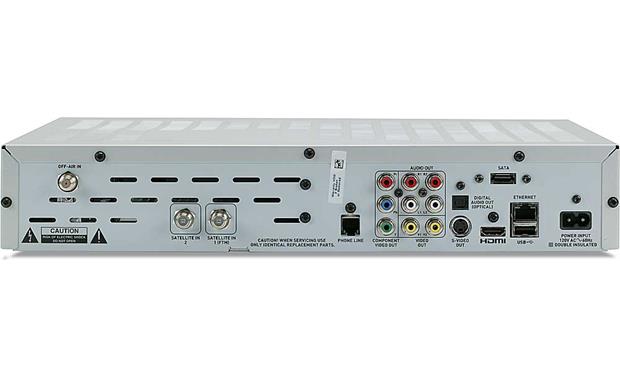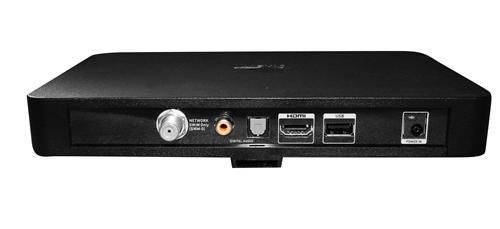It was all the way back in 2012 when I asked, “Will HDMI soon be the only choice?” and here’s a surprise… I was actually right about something. This blog is full of wrong predictions but here’s one I actually got right.
Back in the ’00s… which were (gasp) twenty years ago… your typical piece of home theater gear came with tons of connectivity. If you take a look at DIRECTV’s first modern HD DVR, the HR20… welll take a look for yourself:

You can count a total of 19 input/output connections. Not every one was identical to the others but when it came to video out you sure had choices. There were two identical sets of standard definition outputs PLUS an S-Video connector, and if that wasn’t enough, there was an HDMI connector and a set of component video outputs. This one DVR could easily support four televisions if you wanted to hook it up that way.
Flash-forward…

This is the back of the current DIRECTV 4K Genie Mini Client. AT&T gets props for giving you two different choices for audio out but neither of them is the good-old-red-and-white-RCA you can use with practically any old audio receiver. There is an RCA connector, but it’s just for digital audio. As far as video, you get one choice. It’s HDMI or nothing, just like I said it would be back in 2012. Of all the things I could get right, it had to be the one that makes the thing less useful!
Why did this happen?
In the early ’10s there was still a lot of concern about pirating programming. Every content provider, especially Disney (who owns ESPN), worried that somehow people would get pure digital copies of their broadcasts and resell them. They devised the content protection system called HDCP to fight this. HDCP isn’t easy to defeat, although with enough black-market equipment it isn’t terribly difficult eithe. Having secured the digital output of most devices, they then turned to getting rid of the analog ones.
Component video is a purely analog way of getting HD from one place to another using three RCA cables. It was common in the ’00s before HDMI was invented. It can’t carry content protection, and so the studios sought to destroy it.
Over the years I’ve seen enough content online to believe that getting rid of component video was actually a real conspiracy. It seems that the HDMI Alliance, who codified the HDMI standard, conspired with manufacturers. After a certain date, manufacturers couldn’t use real, licensed HDMI chips and parts unless they did away with component video. Yes, this really happened. And you were a willing part of it because you would rather hook up one cable instead of five.
Is there any hope for unprotected digital video?
Look, content providers have a right to make money off their stuff. They don’t want pristine copies going everywhere, and I understand that. But like most attempts to regulate public behavior, all this has done is drive things underground. As I said the hardware to defeat HDCP isn’t hard to find and neither are sites carrying copies of virtually any movie you want.
The hope really isn’t that you’ll get access to unencrypted digital video, it’s that the content you’re looking for will be available at a reasonable price. Most movies and shows today are available with a subscription to one service or another, or they can be licensed to stream for a few dollars. That’s the real answer to this issue, but unfortunately it won’t bring back component video or unencrypted digital video. Those things only live in the “throwback” world.




